|
|
Ethnography Project, April 2005
The following is an essay I wrote for a Cultural Anthropology course at Temple. This was an exercise in Anthropological Fieldwork. I have changed the names to protect the innocent. ;)
Pictures are below the essay.
|
 Dagorhir:
Battle Lords in the Park
Dagorhir:
Battle Lords in the ParkI have known for a long time that my friend and coworker RK was involved in a medieval reenactment group that staged battles at a local park. A common friend jokingly referred to it as “pillow fighting”, which would sometimes get RK's friends all riled up and defensive. The bruises and scrapes that I saw regularly on RK's hands and face begged to differ. As I have come to realize, Dagorhir is a sport and a social club. It is a way to meet new friends and to get a good workout. It is a way to show off craftsmanship, inventiveness, and daring.
What exactly is Dagorhir? The name comes from Tolkein’s Elvish. Dagorhir means “Battle Lords”. The website gives colorful descriptions of the history of the sport and the rules for participation. The basic idea is for people to get together and stage battles with padded weapons, using a common “manual of arms” as defined by a “War Council”, with some regional variation. Participants must wear certain clothing, in a style approved as “medieval”. Combat rules list types of weapons allowed and the damage each can inflict. Each official battle is refereed by a “Herald”. Regional groups have their own minor changes, but the essential rulebook is the same, so that when they get together for a “war” they are all on the same page. (http://www.dagorhir.com/dagorhir/Rules.htm)
Begun in 1977, the Dagorhir sport is practiced by thousands of people across the continent. The website lists a network of regional groups stretching from coast to coast, organized into chapters composed of smaller units. Each group has its own local practice schedule and battle events, and there are organized gatherings of groups to battle on a larger scale. Once a year, there is a week long camping trip “war” that attracts groups from all over the country, with attendance up to a formidable 500 people. The pictures on the website give an idea of the chaos that results from the large scale clash of a dozen or more regional groups.
The culture does not end with the sport itself. The role playing aspects of the game play a major part in participants' identification with the activity as a way of life. They design and make costumes by hand, they take a new name, and they interact with others in the group socially as well as sportingly.
The local group that I interviewed gets together once a week to practice and has a full battle about once a month. They also have weapon-building parties and other get-togethers, and they plan and discuss their activities over the internet using Yahoo Groups and other forums. Practices and parties don’t require costumes, but to participate in a battle, players are required to wear “garb”. Some people wear their garb for every practice, and others practice in jeans or sweats. When they heard that I was going to come to a practice to take photos and such for this project, everyone decided to come out in full garb despite the foul weather.
There were a lot more people at the practice than I had expected. I thought I'd be watching five or six players at most, but here were fifteen people to greet me at the park, every one of them eager to tell me all about their sport. To make it worse, it was chilly and drizzling. Cold hands and running ink didn’t make my notes any clearer. But the players were excited. This was a larger practice than usual, and there was a pretty good variety in the participants. There were thirteen people fighting and three or four more that watched. The range of ages I estimate from twenty years old to over forty. Some people had been involved in this kind of sport for years (in one case, twenty years) and some were coming out for their first time. Most of the participants were men, but two women played with great enthusiasm.
I spoke with each of the unit leaders in turn, and also the armorer and the oldest participant. The unit leaders described the differences in styles for me. Each unit has a character type based loosely on Tolkein or other fantasy writers’ characters. The units I met were Paladins, Rangers, and Barbarians. Other groups mentioned include Elves or Romans. Each group has a certain style of dress, often a common style of weaponry, and even a personality that comes along with the character. They said that people generally choose the unit that best suits their own personality. For example, the guys that are “crazy berserkers” will choose the Barbarian group.
The first person I spoke with is the head of the Paladin Unit. He described his group as the knights. As a newer unit, they had only two people attending out of six total. A unit must have at least five people to be counted, but that is a rule that can be bent. Many of the people fighting that day were in no particular unit, so the practice battles were organized accordingly.
Jake is the leader of the Rangers. There are about nine people in his unit so far, three of whom attended this practice. My friend RK is one of them. They are the “Rangers of Dregoth” because they are connected to a larger group in Illinois called House Dregoth. Their membership in the larger organization gives them certain perks: their well-sewed matching costumes are the most evident. One thing I noticed at this point, and we discussed, is that many of the people present had T-shirts and other modern gear visible. Despite the strict outline on the website, it’s not unheard of to wear clothes outside the style. Often, the clothing style is chosen more to impress people than to be comfortable or useful. One story they told me was of a girl at one of the campout wars who came onto the battlefield wearing a chainmail bikini. It was pretty ineffective as battle protection (only a hit to the armored areas would count as blocked) and probably not comfortable to wear, but they said the field came to a standstill. It turned out to be an effective outfit after all.
One excellent example of costuming to make a statement was displayed by the two Barbarians at this practice. They had the most visually impressive costumes, with kilts, leather armor, and helmets. The weapons used by the Barbarians are larger and more intimidating than most, and their style of attack is to charge with a loud yell. Their shields are small and seemed to be used more as a deflecting arm pad than as a full shield. In comparison, the Rangers use the largest shields possible according to the rules of the game; they are almost like portable walls. RK said that the Rangers use larger shields and lighter weapons to fight with “more finesse, speed and mobility.”
Individual fighters also bring their own style to the field. One fighter had a way of running in wide circles around the combat area, waving a flail in each hand. Others were more subdued, waiting for an opening before coming in for an attack. Even for a new spectator, I could easily pick out which players had been practicing the sport for a long time. There was a noticeable power in the way they attacked and defended.
The weapons they make are similar to medieval style swords, spears, clubs, and such, but they are padded to reduce damage. Years ago, they used carpet padding to soften their swords. Now, most of the weapons are covered in foam pads from Walmart’s camping department. The final layer of padding is cloth. There are stabbing weapons, throwing weapons, swinging weapons, and blunt swords. Weaponmaking is a serious task among the participants. Weapons break regularly and need repair. Weaponmaking parties happen as often as weekly, and there is a lot of work put into making innovative styles and alterations.
There are many other groups that practice similar types of reenactments. “Trevor” the armorer was present for the practice battle, although he did not participate. He makes armor for a living. He has studied forms of armor from ancient Chinese lacquer to modern Kevlar, and he has learned to make armor to specifications for various reenactment and role playing groups all over. He listed a few of the larger organizations for me. The Society for Creative Anachronism is by far the largest. They have been around for over forty years and their annual “Pennsik” gathering draws up to 20,000 people from the East Coast alone. They use wooden weapons and require players to have armor. Dagorhir players have the option to wear armor or not, as they choose. As RK put it, “our philosophy is pad the weapons, not the people.”
Aside from the SCA, there are other groups that practice reinactment combat. The “Empire of Chivalry and Steel” was one group that the Dagorhir players described as “insane.” Their group uses real weapons made of steel, and requires players to wear full armor. Trevor has some experience making armor for them. “Those swords, if they actually hit you and you weren’t wearing armor, would cut you,” he said. Another group, called Markland, uses weapons similar to the SCA but pads them like Dagorhir. “Oliver” called it “halfway between Dagorhir and SCA.”
The oldest participant at this practice, Oliver started with Dagorhir about twenty years ago. He has seen all the dissensions and splits in the group over that time. The network is complicated and it's hard to tell which groups came first and which were split-off versions. It seems there are many similar groups which were all started by the same group of people, and often use the same set of rules. Many times it is fairly informal between similar groups; RK and his Rangers are actually part of another group called Belegarth that is nearly identical to Dagorhir. When I asked about the lineage of the various groups, Oliver and Trevor and the others nearby groaned and told me I didn’t want to hear all the history. “That’s not important,” they said. Oliver changed the subject and we moved on.
They pad the weapons so that they cause less harm, but it is still quite possible and actually very common to inflict injury. I had seen RK’s battle scars before, and now I got to see torn bloody flesh. “Jim” the Barbarian had his knuckles ripped up pretty badly, but he just soaked up the blood with a pile of napkins and took a short break before re-entering the battle. Not long after that, RK tore his knuckle open. It was bad enough that someone suggested he go to the hospital, but RK just shrugged it off and kept fighting. Arms, legs, and bodies are all very susceptible to bruises and scrapes. They keep some first aid supply handy, but it looked to be mainly padding to soak up blood in the form of Wawa napkins. I tested a couple of the weapons and took a few hits from some of the guys, to see how it felt. The padding makes a big difference. Still, with a good arm behind it, a padded sword can leave a pretty lasting bruise. The rules of the game don’t call for extreme violence, just a hit or multiple hits. The majority of injuries happen in the scuffle of close combat. The handle of a sword or the shaft of a spear does not have padding, making it especially easy to scrape a knuckle.
I believe I got the general sense of the community here. My fieldwork was limited to only a few interviews and one day of observation. With more time, I think I might have found it difficult to remain an outside observer. As it was, I had trouble keeping professional within the Dagorhir crowd. They were friendly and wanted me a part of their group. I refrained from participating to keep a more objective eye to keep them (and myself) from getting distracted. There were a few points that day that I let my professional stance drop and relaxed into enjoying the group on a social level. It’s difficult to judge how much is appropriate when conducting an ethnographic study.
As a group, these fighters are fascinating and entertaining. They are so enthusiastically into their sport, it is hard to remain a spectator. It is easy to see why their numbers are so great.
|
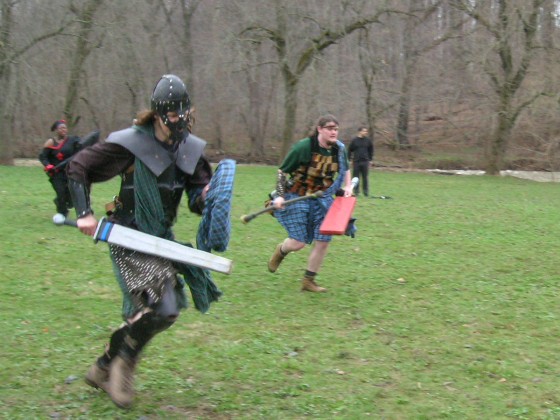
02
|
|
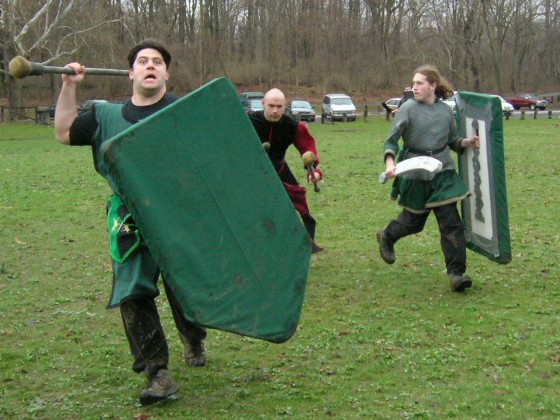
03
|
|
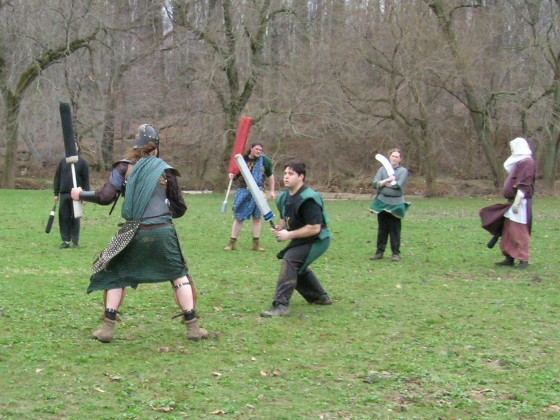
04
|
|
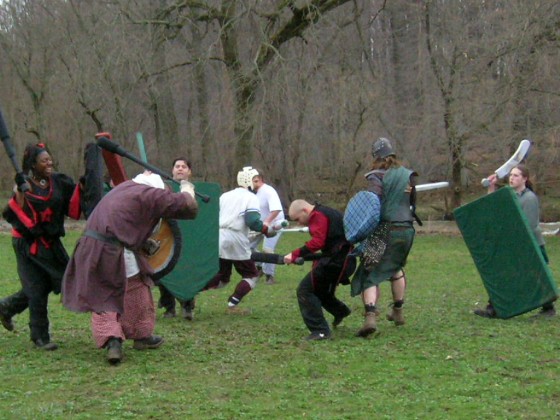
05
|
|
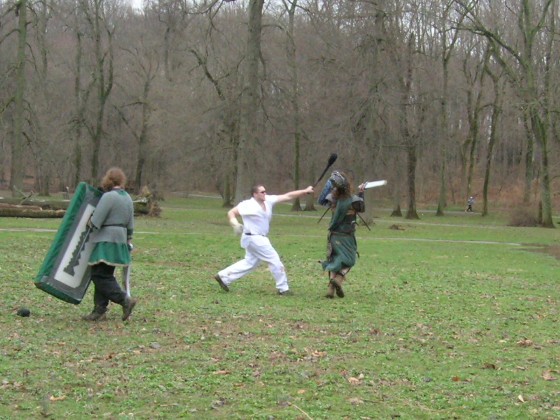
06
|
|
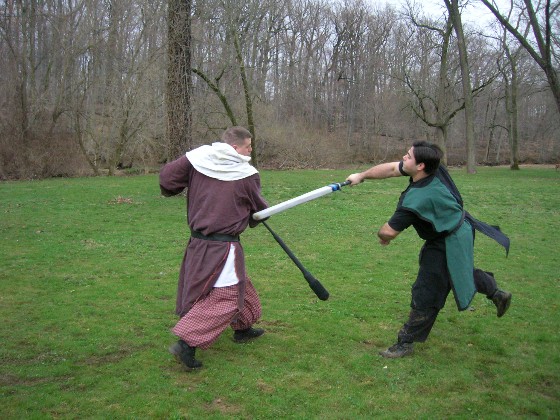
07
|
|
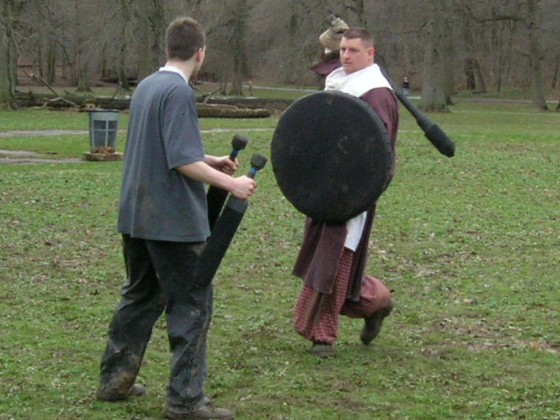
08
|
|
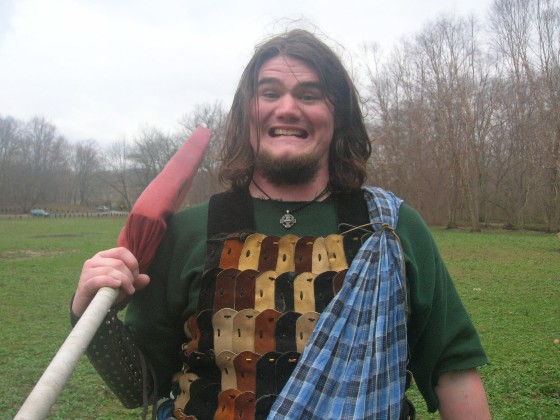
09
|
|
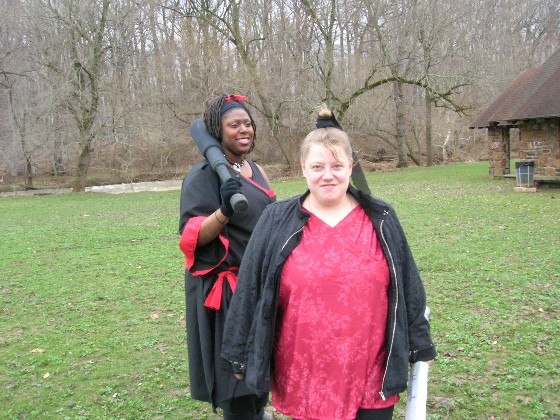
10
|
|
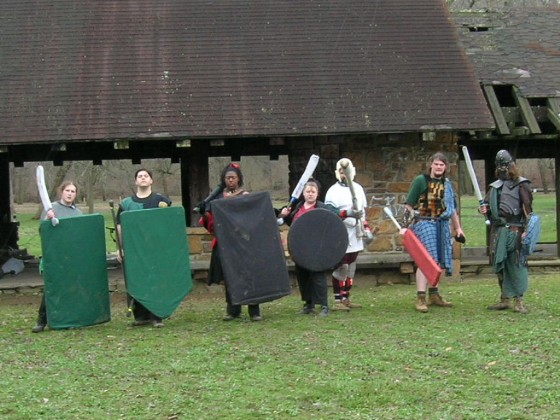
11
|
| |
